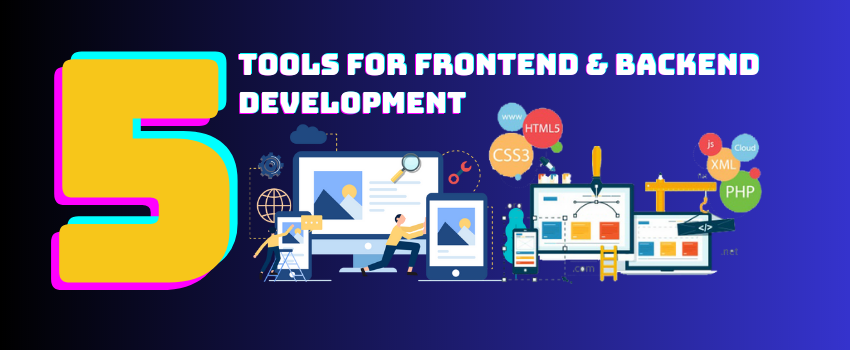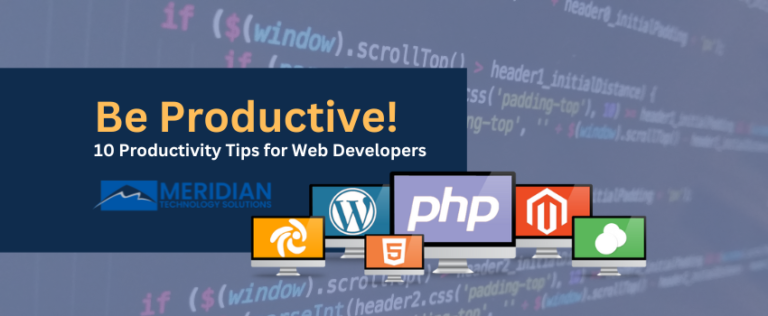5 Best Tools for Frontend And Backend Development
Front-end development, also known as client-side development, focuses on creating the user interface and user experience that users interact with directly. It involves the design, layout, and functionality of the visual elements visible on a website. Front-end developers use technologies like HTML, CSS, and JavaScript to build responsive and user-friendly interfaces that work seamlessly across various devices and browsers. They are responsible for ensuring that the website’s front end is visually appealing, easy to navigate, and functions smoothly to deliver a positive user experience.
Key responsibilities of front-end developers include:
- Creating web pages and user interfaces using HTML and CSS.
- Implementing interactive elements and animations with JavaScript.
- Ensuring the website’s responsiveness and cross-browser compatibility.
- Optimizing the front-end performance for faster loading times.
Front end development tools are essential for front-end developers to build visually appealing and responsive websites. These tools are the foundation of front-end development empowering software developers to create visually appealing, interactive, and user-friendly websites and web applications. As technology continues to evolve, new tools and frameworks may emerge, but the basics of HTML, CSS, JavaScript, Bootstrap, and code editors will remain essential in the front-end development toolkit.
Here are the top 5 tools widely used in front-end development:
(1) HTML (Hypertext Markup Language): HTML is the fundamental building block of any web page. It defines the structure and content of the page using various tags and elements. Front-end developers use HTML to create headings, paragraphs, images, forms, and other elements that users interact with.
(2) CSS (Cascading Style Sheets): CSS is used to control the presentation and layout of HTML elements on a web page. It allows developers to define colors, fonts, spacing, positioning, and more, ensuring a consistent and visually pleasing design across different devices and screen sizes.
(3) JavaScript: JavaScript is a powerful programming language used to add interactivity and dynamic elements to a web page. It enables developers to create animations, handle user interactions, validate forms, and perform other client-side tasks, making websites more engaging and responsive.
(4) Bootstrap: Bootstrap is a popular front-end framework that provides pre-designed, responsive components and styles. It simplifies and accelerates the development process by offering a grid system, ready-to-use UI elements, and a responsive design that adapts to various devices.
(5) Code editors/IDEs: Front-end developers use code editors or Integrated Development Environments (IDEs) to write and manage their code efficiently. Popular code editors like Visual Studio Code, Sublime Text, and Atom provide features like syntax highlighting, auto-completion, and code debugging, enhancing productivity during development.
Back-end development, also known as server-side development, deals with the server, databases, and server-side logic of a website or web application. Back-end developers work behind the scenes to handle data storage, manage user authentication, process requests from the front end, and perform business logic operations. They use server-side languages like Node.js, Python, Ruby, or PHP, along with databases like MySQL, PostgreSQL, or MongoDB, to build the server-side of the application.
Key responsibilities of back-end developers include:
- Implementing server-side logic and business rules.
- Managing databases and handling data storage and retrieval.
- Handling user authentication and security measures.
- Integrating third-party services and APIs.
- Ensuring the smooth functioning of the server and optimizing back-end performance.
There are several backend tools and technologies crucial for back-end developers to create robust and efficient web applications. These tools form the backbone of back-end development, providing developers with the necessary frameworks, languages, and databases to create powerful, scalable, and efficient web applications. The choice of tools may vary based on project requirements, but each tool contributes to building a robust and reliable back end for web applications.
Here are the top 5 tools widely used in back-end development:
(1) Server-Side Languages ( Node.js, Python, Ruby, PHP): Back-end developers use server-side programming languages to handle server operations, process requests, and perform business logic. Node.js, Python, Ruby, and PHP are popular choices for building the back end of web applications due to their versatility and wide community support.
(2) Databases (MySQL, PostgreSQL, MongoDB): Databases are essential for storing and managing application data. SQL databases like MySQL and PostgreSQL are widely used for structured data, while NoSQL databases like MongoDB are suitable for handling unstructured data in a scalable manner.
(3) Express.js (Node.js): Express.js is a popular framework for Node.js that simplifies the process of building web applications and APIs. It provides essential features and middleware to handle routing, HTTP requests, and other server-side tasks, making it a go-to choice for Node.js developers.
(4) Django (Python): Django is a high-level Python web framework that allows developers to build secure and scalable web applications rapidly. It comes with built-in features like an ORM (Object-Relational Mapping) system, an admin interface, and a robust authentication system, streamlining the development process.
(5) Ruby on Rails (Ruby): Ruby on Rails, often referred to as Rails, is a full-stack web application framework for Ruby. It follows the convention over configuration (CoC) principle, reducing the need for manual configurations and enabling developers to focus on writing code for application logic.
Conclusion
Front-end and back-end development work in tandem to create a complete web application. Front-end development focuses on what users see and interact with, while back-end development deals with the server-side operations and data management to support the front-end functionalities. Together, they form a cohesive and functional web application that meets the user’s needs and delivers a seamless user experience.
Whether it is front end or back end development, contact Meridian Technology Solutions. We are a leading software development company offering website development solutions to clients on a global base.
Hire Software Developers! Hire Meridians!







